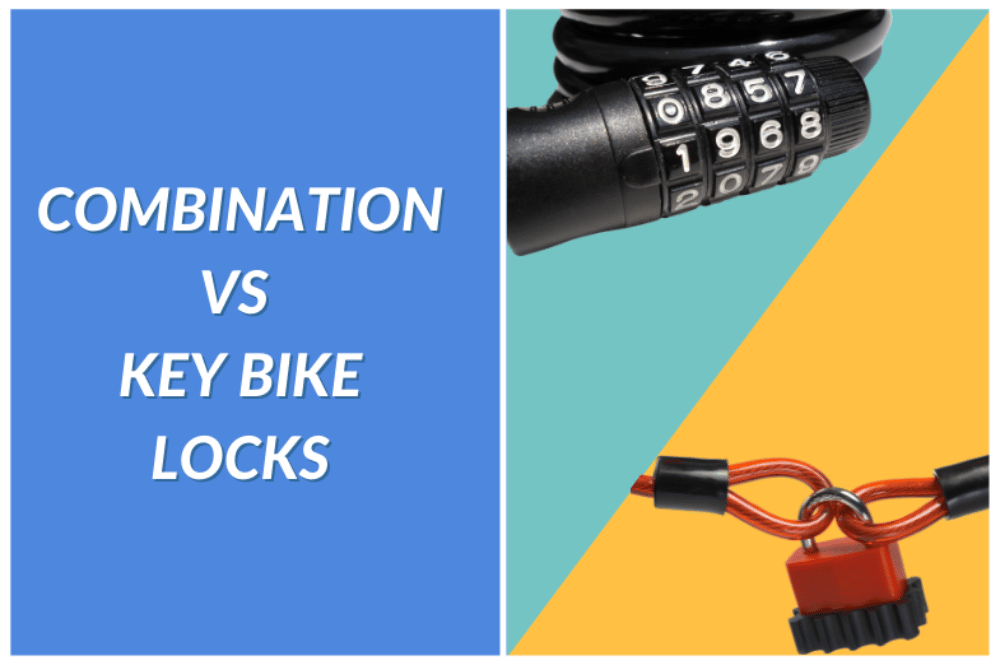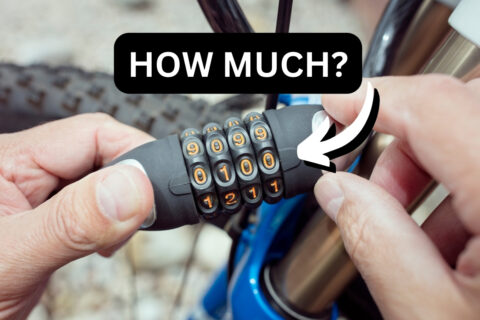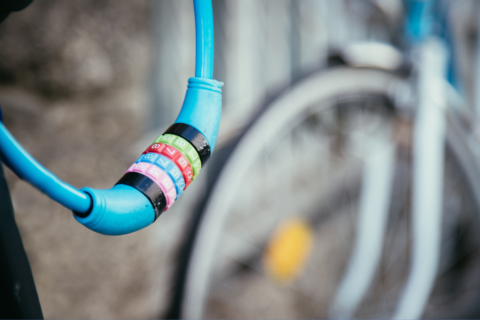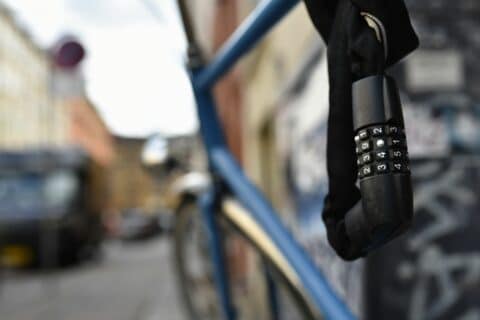This post may contain affiliate links, which help to keep Discerning Cyclist rolling. Learn more.
Securing a bicycle usually comes down to using a D-lock/U-lock, a cable, or a chain. The locking mechanism for each needs careful consideration. These use a combination of numbers on a dial, or a key. The key lock type is generally considered safer than combination lock mechanisms.
It’s vital for all bicycle owners, especially those with newer bikes, to know that thieves tend to rely less on solving combination puzzles or lock-picks in order to get their hands on your bike than on using brute force or the assistance of bolt cutters or power tools.
We’ve taken a look at most types of bicycle lock here, and have included some helpful tips to adding protection and deterrents to all but the most determined thieves. These include choosing the right location, and the physical act of where to place your lock about your bicycle. We’ve also looked at bike locks with alarms, which offer another deterrent.
Combination Bike Lock
A combination bike lock opens when the numbers on a series of rotating dials are lined up in the correct order, and are set to a specific code. The dials are at one of the open ends of the lock, and the bolt is at the other end.
The numbers come preset from the factory, and are relatively easy to reset. More dials means more security. Most people will set their dials to an easily remembered number, and the code can then be shared with anyone without needing to be present. Combination locking mechanisms usually come with three, four, or five rotating dials.
The possible combination of numbers required to release the lock increases as the number of dials do. These are usually numbered from zero to nine. A three dial combination lock has 720 possible combinations, the four-type version has 10,000, and five rotating numbers have significantly more options than that.
Are Combination Bike Locks Safe?
Combination bike locks are considered to be the least-safe option on the market. Even manufacturers suggest that they be used as secondary forms of security. Unlocking them requires the least amount of skill, and they take a shorter amount of time to crack. Additional security should be considered.
Combination locking mechanisms do not feature regularly in the industry’s recognised Sold Secure Gold Standard for the different types of bicycle lock. Logically, the more dials a lock has, the higher number of possible combinations it has.
Manufacturers are aware of the relative ease of cracking a combination lock code, and some build a ‘false gate’ into the mechanism. This essentially tricks someone who uses ‘feel’ to find the number on the dial into thinking they have found it. A false gate ‘click’ of the dial feels similar to a true click.
Combo Bike Lock [PROS + CONS]
| Pros | Cons |
| Simple reset | Relatively easy to ‘crack’ compared to other locking mechanisms |
| Easy to share means of unlocking | Little or no ‘brute force’ needed to ‘crack’ |
| Tend to be combined with a cable which means flexibility if used as part of overall programme of security | Not enough of a deterrent to the opportunist thief and certainly not the career thief |
Key Bike Lock
A key bike lock mechanism will move you up the security scale in comparison to a combination version. The key is usually round or cylindrical, but flat versions, like ordinary keys, are also very popular. The key usually slips into a locking mechanism, which is usually more resistant to ‘cracking’ than a combination lock.
Manufacturers usually supply two keys with a new product and many offer a replacement key policy if they go missing. Depending on your point of view, having to carry a key around can be a pain. The locking mechanism could benefit from a squirt of lubricant every few months.
Flat key versions are easier to ‘crack’ than round or cylindrical ones. Early versions of the round key locking mechanisms were guilty of having a simple loophole to crack, but most manufacturers have closed this off. A key locking mechanism will also be a more visible deterrent to an opportunist thief.
Key Bicycle Lock [PROS + CONS]
| Pros | Cons |
| Better protection against shimming | Having to carry a key around to unlock |
| Most requires some kind of tool to pick | Loss of key means loss of use – even if temporary |
| Visual deterrent for opportunist thieves | Little bit of maintenance from time to time |
Combination vs Key Bike Locks
Like most purchases, the choice of lock will be based on many factors – budget being one of them. For all of the different types of bike lock you can buy, the combination or key locking mechanism is available on all of them. A key lock mechanism beats a combo version in all instances.
We would strongly recommend looking through the Sold Secure guidance (see here for their top-tier Diamond sign-off) to inform any buying choice. Some suggest choosing a price point at a certain percentage of the bicycle as a guide – 10% has been floated around as a minimum. We should also say that many users will double up their locks to give additional security.
Are Combo or Key Locks Better?
A key bike lock is more secure than a combination bike lock. Most key locks at least need a specialised device to pick them. A combo lock requires no special skill. A determined thief will find a way to steal a bicycle, but the last thing they want to do is ‘work’ to get their hands on your machine.
Although we have said that a key bike locking mechanism is better than a combination version, there still is an argument for a combination lock to be used in conjunction with a key lock. Using more than one type of security device will slow a thief down, or divert their eyes elsewhere.
A combination lock can also be used for securing movable parts like saddles, or even a quick-release wheel. By separating them from the frame and locking them more than once, you’ve just made the thief’s job a lot more difficult.












